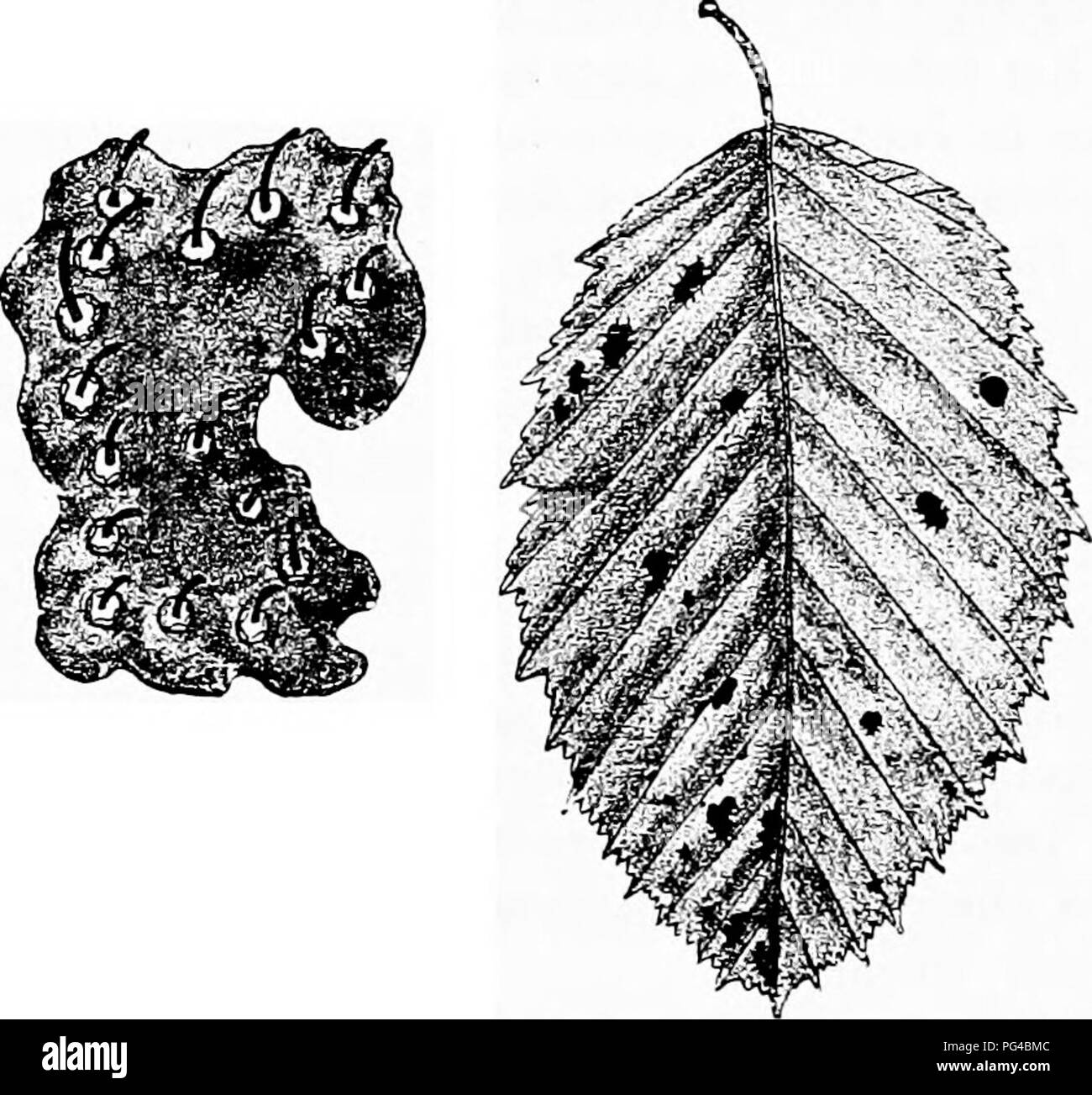. Diseases of plants induced by cryptogamic parasites : introduction to the study of pathogenic Fungi, slime-Fungi, bacteria, & Algae . Plant diseases; Parasitic plants; Fungi. 224 ASCOMYCETES. rupture of the epidermis. Numerous leaves may be diseased and each carry many cushions, yet Vuillemin, who described the disease,^ does not believe the host-plant is affected to any serious degree. M. (Gnom.) coryli Batsch. (Britain and U.S. America). The black stromata are found in withered spots on the leaves of hazel {Corylus); as a rule, each stroma carries only one peri- thecium with a long bea

Image details
Contributor:
Central Historic Books / Alamy Stock PhotoImage ID:
PG4BMCFile size:
7.1 MB (406.9 KB Compressed download)Releases:
Model - no | Property - noDo I need a release?Dimensions:
1636 x 1527 px | 27.7 x 25.9 cm | 10.9 x 10.2 inches | 150dpiMore information:
This image is a public domain image, which means either that copyright has expired in the image or the copyright holder has waived their copyright. Alamy charges you a fee for access to the high resolution copy of the image.
This image could have imperfections as it’s either historical or reportage.
. Diseases of plants induced by cryptogamic parasites : introduction to the study of pathogenic Fungi, slime-Fungi, bacteria, & Algae . Plant diseases; Parasitic plants; Fungi. 224 ASCOMYCETES. rupture of the epidermis. Numerous leaves may be diseased and each carry many cushions, yet Vuillemin, who described the disease, ^ does not believe the host-plant is affected to any serious degree. M. (Gnom.) coryli Batsch. (Britain and U.S. America). The black stromata are found in withered spots on the leaves of hazel {Corylus); as a rule, each stroma carries only one peri- thecium with a long beak similar to that of M. fimlriata.. Fio. lOS.—Mamiana fimbi'iata on Ca'rpinus Beiulus. Leaf of Hombeani seen on lower surface. Stroma (enlarged), with the long black necks of the perithecia projecting from the ruptured leaf-epidermis, (v. Tubeuf del.) Valsa. A stroma is generally present, but is of very variable appear- ance ; embedded in it are the perithecia, with only their beak- like mouths projecting. The spores are hyaline or light-brown, unicellular, and generally bent. No paraphyses are present. Valsa oxystoma Eehm.^ This causes disease and death of branches of Alnus viridis in the Alps. The symptoms are withering and drying up of single branches on an otherwise green bush. This disease causes severe loss in the Tyrol, 1 Titres et travaux scientifiquen, 1890. ^v. Tubeuf. "Zwei Feinde d. A^eneTe, " Forstlich-naturimss. ZeitschriJ't, 1892.. Please note that these images are extracted from scanned page images that may have been digitally enhanced for readability - coloration and appearance of these illustrations may not perfectly resemble the original work.. Tubeuf, Karl, freiherr von, 1862-1941; Smith, William G. London ; New York [etc. ] : Longmans, Green & co.